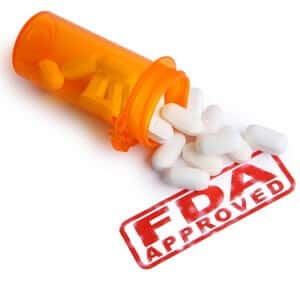
For decades we were staunch defenders of the FDA. We thought the agency did an amazing job protecting consumers from bogus products. We applauded the organization for making sure Americans’ medications were safe and effective.
We were especially enthusiastic about generic drugs. We were convinced that the FDA helped patients save tons of money with generic products that provided absolutely identical formulations as the brand name medicine. It seemed like the perfect system.
Over the last 15 years we have begun to question our old assumptions. A new report by investigative journalist Charles Seife provides data to support our concerns.
Although the Food and Drug Administration “is the oldest comprehensive consumer protection agency in the U.S. federal government” according to the agency website, we wonder if it has abandoned its mission.
In the early years of the 20th century, patent medicine salesmen peddled snake oil with unknown and often dangerous ingredients. The Pure Food and Drug Act of 1906 was intended to protect people from contaminated or dangerous drugs.
The FDA now focuses a lot of resources on approving drugs as quickly as possible, but it doesn’t make its decision process nearly as transparent as many would like.
What Is the FDA Hiding?
An expose in the journal JAMA Internal Medicine (online, Feb. 9, 2015) found that when the FDA discovers research misconduct in clinical trials, it does not let the public know the details.
The author, Charles Seife, explained in a Slate essay:
“When the FDA finds scientific fraud or misconduct, the agency doesn’t notify the public, the medical establishment, or even the scientific community that the results of a medical experiment are not to be trusted” (Slate, Feb. 8, 2015).
Seife concludes that: “the FDA has shown a pattern of burying the details of misconduct.” Faked reports, forged data and falsified clinical trial results are often hidden from the public eye.
A spokeswoman for the FDA responded to Seife’s charges. She told us that when the FDA provides details on scientific fraud, the agency has to avoid exposing confidential commercial data. She added that the allegation that FDA buries this information is not true.
Nonetheless, the FDA’s documents are frequently redacted. Even when they are available, information on the drug, the study site or the pharmaceutical company involved may be blacked out, making it difficult to trace which drug was involved.
We’ve encountered these FDA policies ourselves in our quest to find out which generic drugs are truly bioequivalent. The agency requires all generic drug makers to show that their product is absorbed into the blood stream at the same rate and to the same extent as the original brand name medicine. But the FDA doesn’t share these data with doctors, pharmacists or patients.
The agency’s mantra seems to be, trust us; we know what we are doing. But the Budeprion XL 300 debacle makes us wonder if that is true. This generic form of the long-acting antidepressant bupropion (Wellbutrin XL 300) was introduced late in 2006. By February 2007 we were getting the first reports from people who found that the generic did not control their depression well, although it did have side effects. Eventually we heard from hundreds of people having difficulties with this generic drug.
At first, the FDA assured us that these folks were having a psychosomatic reaction to a change in the look of the pill. But finally the agency commissioned its own test of bioequivalence. The product failed, and the company was asked to withdraw its drug on Oct. 3, 2012 because it was “not therapeutically equivalent.”
How many other generic drugs might not live up to expectations? Right now, we can’t tell because bioequivalence data are considered trade secrets.
Physicians, pharmacists and patients deserve to see key generic drug data so they can verify that such drugs are indeed as good as the FDA maintains they are. That is the only way the public can regain trust in the FDA and its generic drug approval process.

